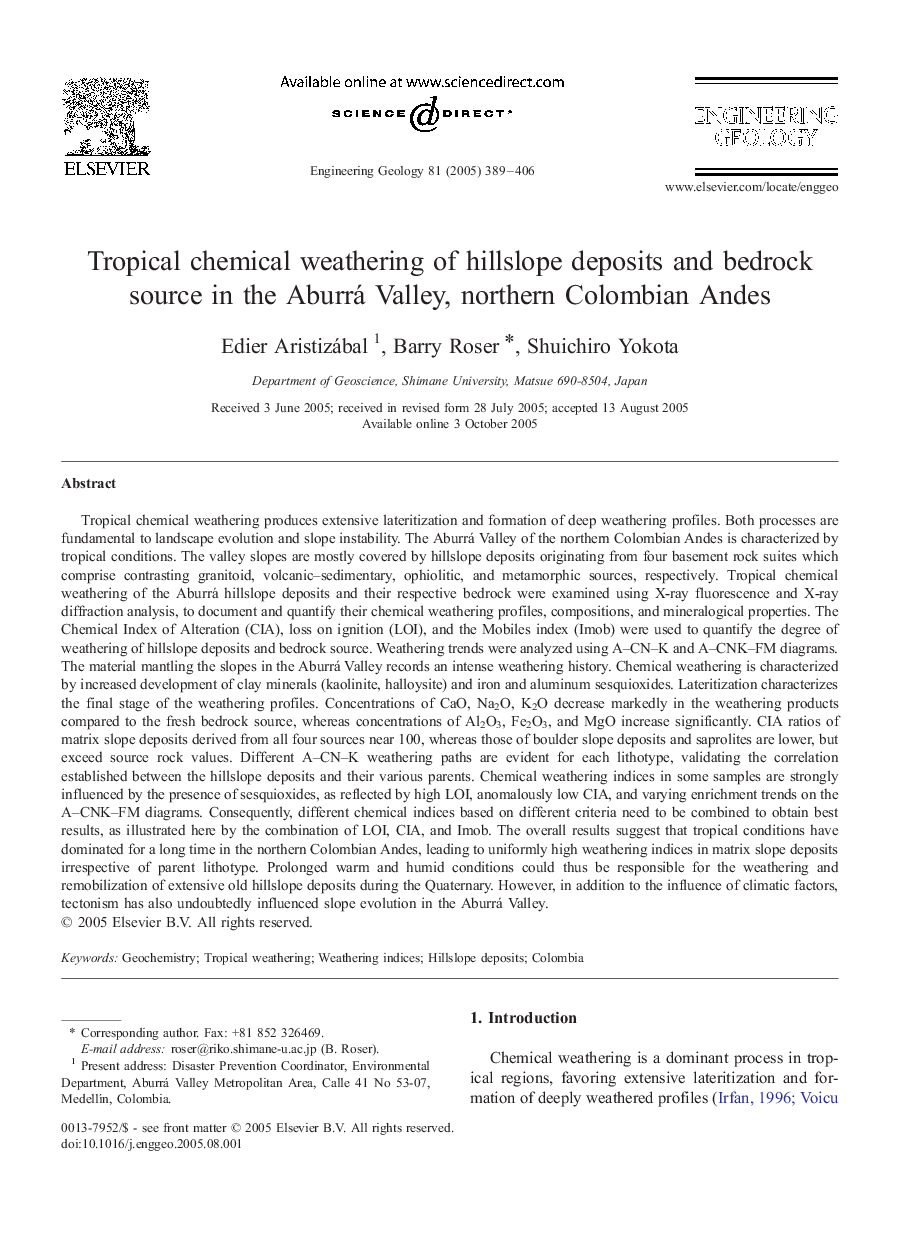| Article ID | Journal | Published Year | Pages | File Type |
|---|---|---|---|---|
| 9537941 | Engineering Geology | 2005 | 18 Pages |
Abstract
Tropical chemical weathering produces extensive lateritization and formation of deep weathering profiles. Both processes are fundamental to landscape evolution and slope instability. The Aburrá Valley of the northern Colombian Andes is characterized by tropical conditions. The valley slopes are mostly covered by hillslope deposits originating from four basement rock suites which comprise contrasting granitoid, volcanic-sedimentary, ophiolitic, and metamorphic sources, respectively. Tropical chemical weathering of the Aburrá hillslope deposits and their respective bedrock were examined using X-ray fluorescence and X-ray diffraction analysis, to document and quantify their chemical weathering profiles, compositions, and mineralogical properties. The Chemical Index of Alteration (CIA), loss on ignition (LOI), and the Mobiles index (Imob) were used to quantify the degree of weathering of hillslope deposits and bedrock source. Weathering trends were analyzed using A-CN-K and A-CNK-FM diagrams. The material mantling the slopes in the Aburrá Valley records an intense weathering history. Chemical weathering is characterized by increased development of clay minerals (kaolinite, halloysite) and iron and aluminum sesquioxides. Lateritization characterizes the final stage of the weathering profiles. Concentrations of CaO, Na2O, K2O decrease markedly in the weathering products compared to the fresh bedrock source, whereas concentrations of Al2O3, Fe2O3, and MgO increase significantly. CIA ratios of matrix slope deposits derived from all four sources near 100, whereas those of boulder slope deposits and saprolites are lower, but exceed source rock values. Different A-CN-K weathering paths are evident for each lithotype, validating the correlation established between the hillslope deposits and their various parents. Chemical weathering indices in some samples are strongly influenced by the presence of sesquioxides, as reflected by high LOI, anomalously low CIA, and varying enrichment trends on the A-CNK-FM diagrams. Consequently, different chemical indices based on different criteria need to be combined to obtain best results, as illustrated here by the combination of LOI, CIA, and Imob. The overall results suggest that tropical conditions have dominated for a long time in the northern Colombian Andes, leading to uniformly high weathering indices in matrix slope deposits irrespective of parent lithotype. Prolonged warm and humid conditions could thus be responsible for the weathering and remobilization of extensive old hillslope deposits during the Quaternary. However, in addition to the influence of climatic factors, tectonism has also undoubtedly influenced slope evolution in the Aburrá Valley.
Related Topics
Physical Sciences and Engineering
Earth and Planetary Sciences
Geotechnical Engineering and Engineering Geology
Authors
Edier Aristizábal, Barry Roser, Shuichiro Yokota,
